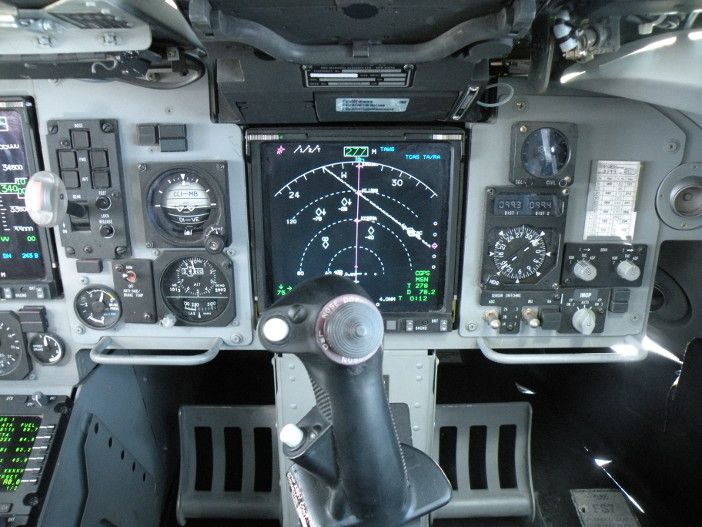Nick Gkikas is an expert in ergonomics within aviation and a member of the Chartered Institute of Ergonomics and Human Factors. He specializes in cockpit design and has had an extensive career to date working with industry to create “error free” cockpit environments for aircraft controls.
Aerospace Testing International talks to Nick about how human factors affect cockpit design and how testing technology and processes keep pace with the changing way pilots interact with aircraft.
What do you do?
My current role is focused on the design and development of cockpit system updates for Eurofighter Typhoon capability upgrades for BAE Systems. I also support colleagues with the human factors integration (HFI) elements of cockpit system design.
How does the ergonomics of cockpits compare to other vehicles, such as cars?
You’d probably be surprised to hear that in terms of the human factors and ergonomics knowledge and skills required, there is very little to pick between the automotive and aerospace industries. The exact same methods – such as anthropometric tools, task analysis, cognitive work analysis, experimental methods and quantitative methods – are necessary to inform system and product development.
But the priorities are different, with a focus on specific areas of ergonomics and human factors that is shaped by the historic legacy of each industry. The internal stakeholders and external customers of each sectors also have different expectations of ergonomics.
A key consideration is that the development cycle of a car is very streamlined, two to three years, which requires a lot more simulation and digital development and testing, with physical testing being there for confirmation only. There are much longer development cycles for a new airborne platform, so there is much less gain to be had from digital development and testing.
How much simulation and testing are normally performed to ensure pilots can operate an aircraft effectively?
Typically, we do a digital assessment, followed by a ‘quick and dirty’ mock-up, then a cockpit rig, before finally testing on a development aircraft. The times between each phase vary from a few months for minor updates to years for white sheet designs – the latter are extremely rare.
With the exception of the digital phase, where digital human models are used to assess against the occupant packaging specification, the other phases involve real pilots – test pilots and customer representative pilots.
We try to assess dynamic operations within quasi-mission environments as early as possible, rather than static anthropometrics, because it results in huge savings in terms of cost and time.
At what point in the development of aircraft is ergonomics normally considered and at what point should it be considered?
In the last decade, ergonomics and human factors have been formally included in aviation safety and military equipment standards. On that basis, it tends to be included in the conceptual stages of development. But it is rarely a priority when compromises between engineering requirements and targets have to be made during development.
That’s not a complaint – I think it is us, as ergonomists and human factors engineers, who should do a better job at collecting evidence and demonstrating the competitive edge that ergonomics and human factors integration can offer in terms of cost savings, customer value, reputation building and safety excellence.
How is testing and simulation technology developing to improve ergonomics in cockpits?
Nowadays, there are fully-digital suites for development and testing. Some customization is necessary, as the driving markets for those digital suites were mainstream, mass-produced products and services such as IT, telecommunications and cars.
But in theory we can have fully digital, model-based platform development and test, with flight tests conducted to confirm and finalize only. This is the way Formula 1 car development has done it for a good few years now.
How are the increasing use of automation in aircraft and developments in display and control technologies affecting the design of cockpits?
This is probably the biggest difference between commercial and military aviation, fast jets in particular. Tradition, legacy and a bit of military hero culture dictates that pilots have a huge influence in every program. Pilots want to fly the aeroplane.
A bit like drivers who hate vehicle automation, the majority of fast jet pilots hate any automation that touches the skill-based level of the pilot task. Automation itself is extremely good at performing tasks reliably in a pre-determined manner. But it is by definition inflexible and that is where a lot of the frustration comes from. The real game changer is artificial intelligence, but that has many other aspects to it and requires a very different approach, not least in testing and qualification.
Then, a lot of what we consider as new control and display technologies is not that new at all. Head-up displays can be thought of as an example of augmented reality (AR) and have been in-service for many years. Advances in display and control technologies still affect human factors in the cockpit though.
Quantitative improvements in display resolution determine our accuracy threshold for human-machine interface (HMI) adoption. Qualitative improvements in HMI technology determine the flexibility of where an AR function can be integrated, for example fixed within a pilot’s field-of-view, helmet mounted or as a portable device. Finally, our neuroergonomics knowledge and our capability to exploit that in tandem with physiological measures and controls, change things a lot.
 Nick Gkikas is a Human Factors Engineer specialising in vehicles and transportation systems and the General Treasurer of the Chartered Institute of Ergonomics and Human Factors (CIEHF). Nick holds a PhD in Ergonomics (2010) and an MSc in transportation human factors, both from Loughborough University and has published original research in both road vehicle and aviation Human-Machine Interaction (HMI).
Nick Gkikas is a Human Factors Engineer specialising in vehicles and transportation systems and the General Treasurer of the Chartered Institute of Ergonomics and Human Factors (CIEHF). Nick holds a PhD in Ergonomics (2010) and an MSc in transportation human factors, both from Loughborough University and has published original research in both road vehicle and aviation Human-Machine Interaction (HMI).





